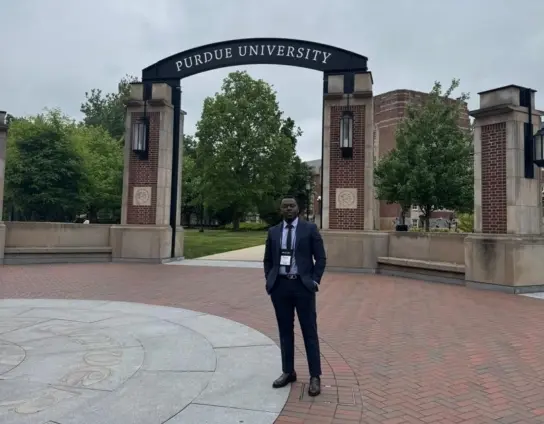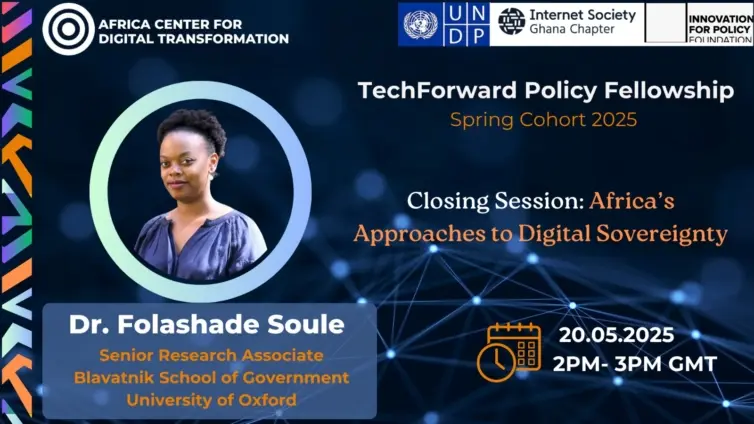For generations, farmers in Kwabeng, Ghana, have relied on traditional knowledge to predict the weather, a crucial element in determining planting schedules and ensuring successful harvests. But with increasing environmental changes, traditional indicators have become less reliable, leaving farmers vulnerable. Now, an innovative project called AI4SD is stepping in, integrating indigenous weather forecasting methods with machine learning to offer a more accurate AI weather forecast to Kwabeng farmers.
The AI4SD project aims to improve local farming decisions by harnessing the power of artificial intelligence. However, the intrusion of illegal mining, locally known as ‘galamsey,’ has significantly impacted the environment, disrupting traditional weather patterns and rendering age-old forecasting techniques less effective. This article explores how the AI-integrated weather forecasting system is helping farmers in Kwabeng navigate these challenges, enhance their agricultural practices, and secure their livelihoods.
The disruption of traditional weather patterns poses a significant threat to the agricultural community in Kwabeng. For generations, farmers have meticulously observed cloud movement, lunar phases, and the behavior of local flora and fauna to predict rainfall and seasonal changes. These time-honored methods were deeply intertwined with the local ecosystem.
Dr. Enoch Besah, a lead researcher in the AI4SD project, explains, “One of the main challenges identified was the unavailability of reliable weather information to guide farming decisions. Farmers have traditionally relied on indicators such as cloud formation and wind patterns. However, due to environmental degradation, including deforestation from galamsey, these indicators have become unreliable.”
The pervasive environmental degradation, fueled by illegal mining activities, has disrupted these traditional indicators. Deforestation has altered rainfall patterns, and the pollution of water bodies has affected the behavior of aquatic life, rendering it difficult for farmers to accurately predict weather conditions based on traditional signs. The increasing unpredictability has led to crop failures and economic hardship for many farming families.
To combat this growing uncertainty, the AI4SD project has developed an innovative AI weather forecast system that merges indigenous knowledge with cutting-edge artificial intelligence. This approach seeks to not only provide more accurate predictions but also to preserve and enhance the invaluable traditional knowledge of Kwabeng farmers.
The core of the AI4SD solution is an AI-integrated indigenous weather forecasting system. This system combines the insights of local farmers with machine learning technology, creating a powerful tool for predicting weather patterns. The Responsible AI Lab | RAIL developed a mobile application to facilitate the integration of AI with traditional forecasting.
According to Dr. Besah, “The app incorporates indigenous forecasts and uses a machine learning model trained on the farmers’ historical predictions and weather data. The system provides feedback on the accuracy of their forecasts and improves over time as it learns from new inputs.” The app allows farmers to input their traditional forecasts, which are then analyzed by the AI to generate more accurate predictions.
This collaborative approach ensures that the AI weather forecast system is not only accurate but also relevant and accessible to the Kwabeng farmers who rely on it. It empowers them to make informed decisions about planting, irrigation, and harvesting, ultimately improving their agricultural outcomes.
The goal of the AI4SD project is not to replace indigenous knowledge with technology but to create a synergistic relationship that enhances the accuracy and reliability of weather forecasts. This collaborative approach recognizes the value of traditional knowledge while leveraging the power of AI to address the challenges posed by environmental degradation.
Dr. Eric Tutu Tchao emphasizes this point, stating, “Initial results showed that farmers’ forecasts were about 50% accurate. With the integration of AI, our target is to raise that to 90%, possibly 99% over time. This is not a competition between indigenous knowledge and technology; it’s a collaboration.” This collaboration seeks to empower farmers with the best possible information, combining the wisdom of generations with the precision of modern technology.
Recognizing the broader impacts of illegal mining on local weather systems, the AI4SD project incorporated a stakeholder session to address this critical issue. AI in Agriculture theme members educated farmers on the dangers of illegal mining and its detrimental effects on the environment.
Furthermore, the project encouraged complementary income-generating activities to reduce reliance on environmentally harmful practices. By providing farmers with alternative sources of income, the AI4SD project hopes to promote sustainable practices and mitigate the long-term impacts of illegal mining on the local ecosystem.
To ensure the successful adoption of the AI weather forecast system, District Director of Agriculture, Ben Owusu, urged farmers to embrace the technology, noting, “This is not like other apps. It is designed specifically for your environment, and it’s free. I encourage you to use the knowledge shared here to improve your farming practices.” The AI4SD team plans to return in October to evaluate the app’s effectiveness and gather feedback from farmers. This iterative process will ensure that the system continues to meet the evolving needs of the community.
In conclusion, the AI-integrated weather forecasting system offers a promising solution for farmers in Kwabeng, Ghana, facing the challenges of changing weather patterns and environmental degradation. By merging indigenous knowledge with the power of artificial intelligence, the AI4SD project is empowering farmers to make more informed decisions, improve their agricultural practices, and secure their livelihoods. This collaborative approach, which enhances rather than replaces traditional knowledge, underscores the importance of integrating technology with local expertise. It is a model that other farming communities can emulate to improve their agricultural practices in the face of increasingly unpredictable weather conditions. The AI weather forecast offers Kwabeng farmers a beacon of hope.
Image Source: MYJOYONLINE



















